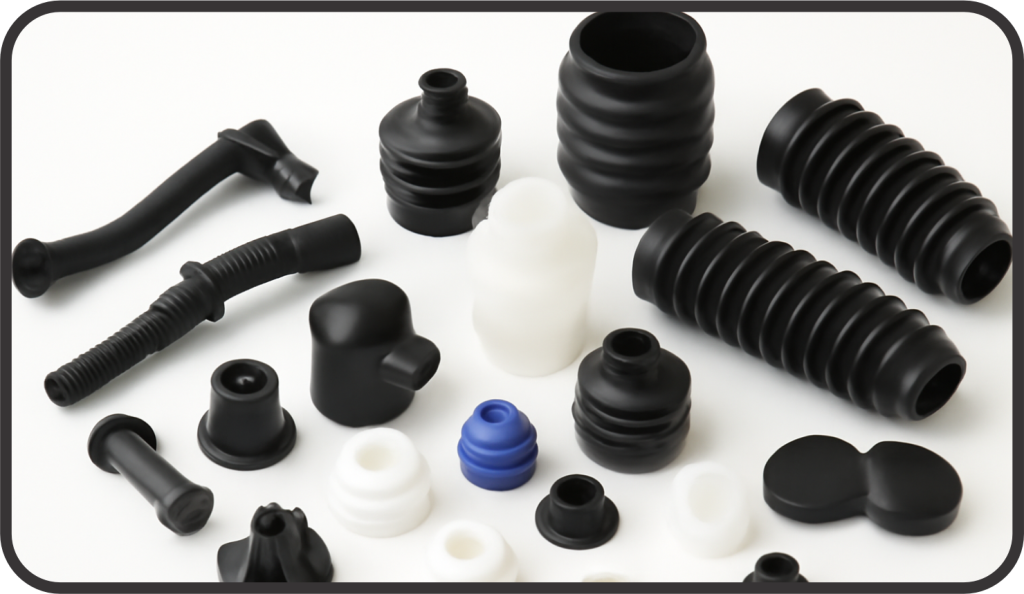
Rubber bellows are flexible, accordion-like components typically made from elastomeric materials such as rubber or synthetic rubber compounds. They are designed to provide flexibility in various mechanical systems while maintaining a seal against dust, dirt, moisture, and other contaminants.
Here are the key details about rubber bellows:
Material: Rubber bellows are commonly made from materials such as natural rubber, synthetic rubber (e.g., neoprene, EPDM, silicone), or thermoplastic elastomers (TPE). The choice of material depends on the specific application requirements including temperature resistance, chemical compatibility, and durability.
Construction: Bellows consist of a series of convoluted folds or pleats that allow for expansion and contraction while maintaining a sealed environment. These folds provide flexibility and allow the bellows to accommodate movements in different directions without compromising the integrity of the seal.
Applications: Rubber bellows find applications in a wide range of industries and systems, including automotive, aerospace, HVAC (heating, ventilation, and air conditioning), industrial machinery, piping systems, and more. They are used to protect moving parts, compensate for misalignments, absorb vibrations, and maintain seals in dynamic environments.
Functionality:
Sealing: Rubber bellows create a barrier against external contaminants, preventing the ingress of dust, moisture, and other particles into sensitive components or systems.
Flexibility: The accordion-like design of bellows allows for expansion, contraction, and movement in multiple directions, accommodating changes in pressure, temperature, or positional adjustments.
Absorption of Vibrations: Bellows can absorb vibrations and shocks, reducing the transmission of these forces to connected components or structures.
Compensation for Misalignments: They can compensate for misalignments or slight angular deviations between connected parts, improving the overall functionality and lifespan of the system.
Installation: Rubber bellows are typically installed between two components or systems that require a flexible and sealed connection. They are often secured using clamps, flanges, or other mechanical fastening methods to ensure a secure and reliable seal.
Maintenance: Regular inspection and maintenance of rubber bellows are essential to ensure optimal performance and longevity. Inspections should include checks for signs of wear, damage, or deterioration, and replacement of worn or damaged bellows as needed.
Overall, rubber bellows play a crucial role in various mechanical and industrial applications by providing flexibility, sealing, and protection against environmental factors, contributing to the efficiency and reliability of systems and equipment.
